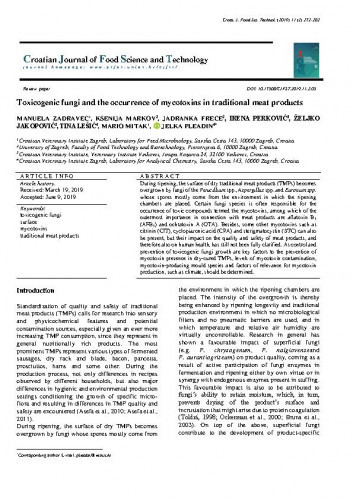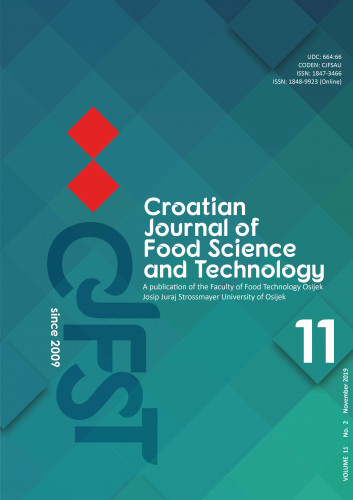During ripening, the surface of dry traditional meat products (TMPs) becomes overgrown by fungi of the Penicillium spp., Aspergillus spp. and Eurotium spp. whose spores mostly come from the environment in which the ripening chambers are placed. Certain fungi species is often responsible for the occurrence of toxic compounds termed the mycotoxins, among which of the outermost importance in connection with meat products are aflatoxin B1 (AFB1) and ochratoxin A (OTA). Besides, some other mycotoxins such as citrinin (CIT), cyclopiazonic acid (CPA) and sterigmatocystin (STC) can also be present, but their impact on the quality and safety of meat products, and therefore also on human health, has still not been fully clarified. As control and prevention of toxicogenic fungi growth are key factors to the prevention of mycotoxin presence in dry-cured TMPs, levels of mycotoxin contamination, mycotoxin-producing mould species and factors of relevance for mycotoxin production, such as climate, should be determined.
Sažetak

 Croatian journal of food science and technology : a publication of the Faculty of Food Technology Osijek : 11,2(2019) / editor-in-chief Jurislav Babić.
Croatian journal of food science and technology : a publication of the Faculty of Food Technology Osijek : 11,2(2019) / editor-in-chief Jurislav Babić.